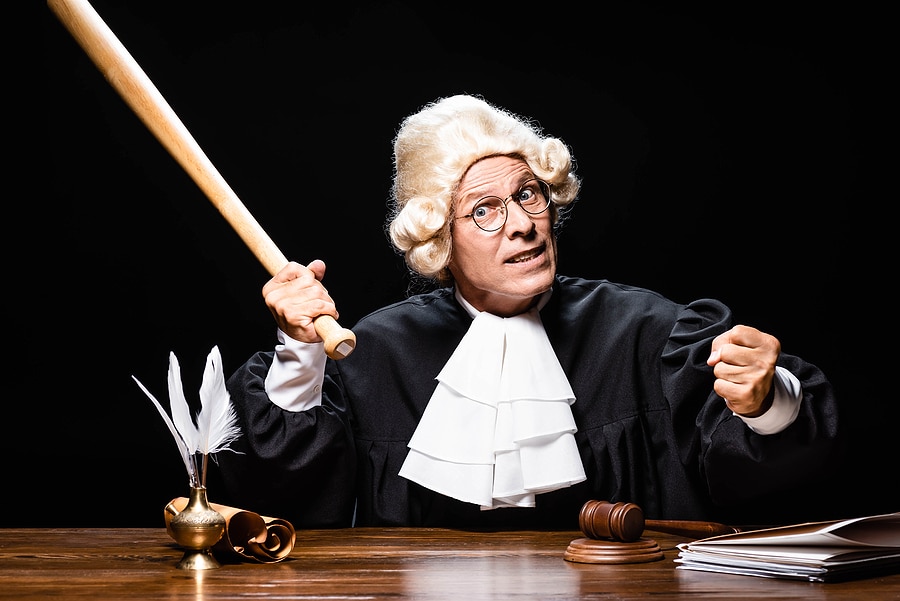Wigs for judges are a long-standing tradition in the courtrooms of the United Kingdom and other Commonwealth countries. Dating back to the 17th century, these wigs were used to represent professionalism and authority in the courtroom. The custom has endured over time and is still worn by judges today.
When it comes to wigs for judges, there are several different types that can be worn depending on the occasion. The most common type of wig is the full-bottomed wig, which consists of long curls at the sides and back of the head. This style of wig is usually seen in formal court settings such as appeals or trials. Another popular style of wig is the bobbed wig, which features shorter curls at the sides and back of the head. This style is often worn in less formal settings such as hearings or preliminary hearings.
In addition to these two styles, there are also other types of wigs that can be worn by judges. These include lace-front wigs, half-wigs, top hats, and even powdered ones (which have not been seen since before World War II). All of these variations have their own unique look that can help to create a sense of power and authority within a courtroom setting.
It’s important to note that not all jurisdictions require judges to wear wigs when they enter a courtroom. However, some courts still adhere to this tradition because it is seen as a sign of respect for legal history and formality within a court setting. Judges who do choose to wear wigs may also need to invest in specialized cleaning products or services so that they can keep their wigs looking pristine throughout court proceedings.
Ultimately, wigs for judges continue to be an important part of legal history and tradition in many countries around the world. Although their use may vary from jurisdiction to jurisdiction, their presence serves as a reminder that justice must alays be served with respect and dignity – no matter what form it takes!

The Significance of Wigs in Judicial Settings
Judges in the United Kingdom have worn wigs since the 17th century as a sign of respect and authority to reflect the formality and tradition of the legal system. Wigs are seen as a sign of impartiality, as they conceal the identity of the judge and make it harder to discern their gender or ethnicity.
Wigs also serve to underscore the power that judges wield in the courtroom, as well as to show deference for defendants, witnesses, lawyers and other court personnel involved in proceedings. The black color of judicial wigs is intended to suggest a neutral attitude, while the white-powdered style denotes a degree of solemnity and decorum that is expected from tose seated on the bench.
Most importantly, judges’ wigs are seen as a link to legal history; they remind us of our shared heritage that extends back centuries. In wearing them today, we honor our past and demonstrate respect for our current legal system.
The End of Judicial Wigs: Exploring the Reasons Behind the Change
Judges in Britain stopped wearing wigs in the late 18th century due to a combination of factors. The most significant factor was the British government’s introduction of a tax on hair powder in 1795. This made the cost of wearing wigs prohibitively expensive and as a result, many members of the legal profession discarded their wigs. Furthermore, this period also coincided with the American Revolution which led to an increased desire to break with British traditions. This was aother factor that contributed to judges ceasing to wear wigs in courtrooms.
Do Judges Wear Wigs?
No, judges do not wear wigs. In many countries, including the United Kingdom and the United States, judges wear a traditional long black robe known as a ‘gown’ rather than a wig. The gown is worn as a symbol of authority and respect for the court. It is believed to have originated from the robes that were traditionally worn by European scholars in the 16th century. In some countries, such as India and Pakistan, certin types of judges may also wear a turban or skullcap in addition to their gown.
Origin of Judges’ Wigs
The practice of wearing wigs in a courtroom can be traced back to the reign of Charles II in the late 17th century. During this period, wigs were a fashion statement for polite society, and their presence in courtrooms was simply an extension of this trend.
At first, these wigs were quite elaborate – typically long, curly white hairpieces made from horsehair or goat hair. Over time, though, they became simpler and less ostentatious; by the 19th century they had evolved into the black horsehair wigs still worn by judges today. This style is said to symbolize wisdom and dignity and is seen as a way to distinguish between lawyers and judges wthin the courtroom.
The tradition of wearing wigs in court has been kept alive for centuries and continues to be an important element of modern judicial dress codes around the world.
The Material Used to Make Judges’ Wigs
Judges wigs, also known as barrister wigs, are a headdress traditionally worn by legal professionals in the courtrooms of many countries. They are typically made of horsehair and have a white or off-white color. The style is derived from the peruke, or periwig, wich was popular in the 17th century. Horsehair is chosen for its durability and ability to hold its shape over long periods of time. Modern judicial wigs are designed with comfort in mind, often featuring an adjustable hook-and-loop strap at the back.
Do Powdered Wigs Still Exist in England?
No, powdered wigs are no longer worn in England’s courtrooms. Wigs had been a traditional piece of legal attire for many centuries, but in 2007 it was decided that they were no longer necessary for family or civil court appearances or when appearing beore the Supreme Court of the United Kingdom. However, some barristers still choose to wear them during civil proceedings and wigs remain a requirement in criminal cases.
The Significance of Wigs in Scottish Judicial System
In Scotland, judges wear wigs as a sign of respect for the court and to signify their impartiality. The wig is a symbol of the office held by judges and is seen as an important part of their role. The legal profession in Scotland has worn wigs since 1685, when they were introduced by King James II. The traditional full-bottomed wig is stil worn by judges on ceremonial occasions such as the “kirking of the court”, which marks the start of the legal year. This type of wig is now reserved for special occasions, with a more practical style being worn in court day-to-day. Wearing a wig also serves to differentiate between members of the legal profession and members of the public or press who are present in court.
Conclusion
In conclusion, the wearing of wigs by British judges and lawyers is a tradition that has its roots in legal history and formality. Although the American Revolution saw a decline in the use of wigs, it is still practiced today by some British courts. Instead, judges and lawyers wear long black robes known as the ‘gown’ which serves to demonstrate their authority in the courtroom. As such, this practice serves to set apart thse who are participating in legal proceedings from other members of society.












